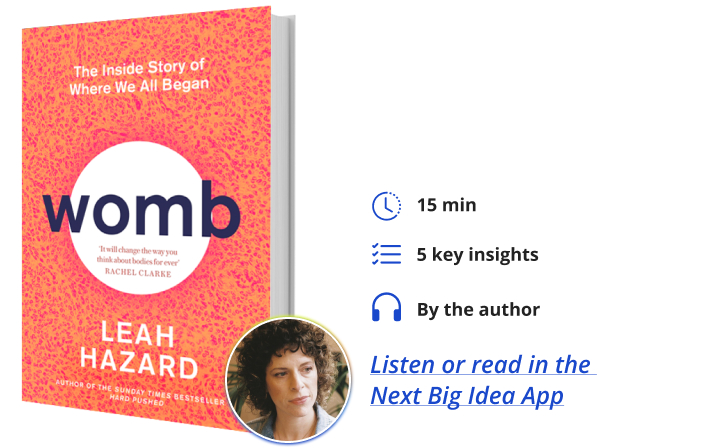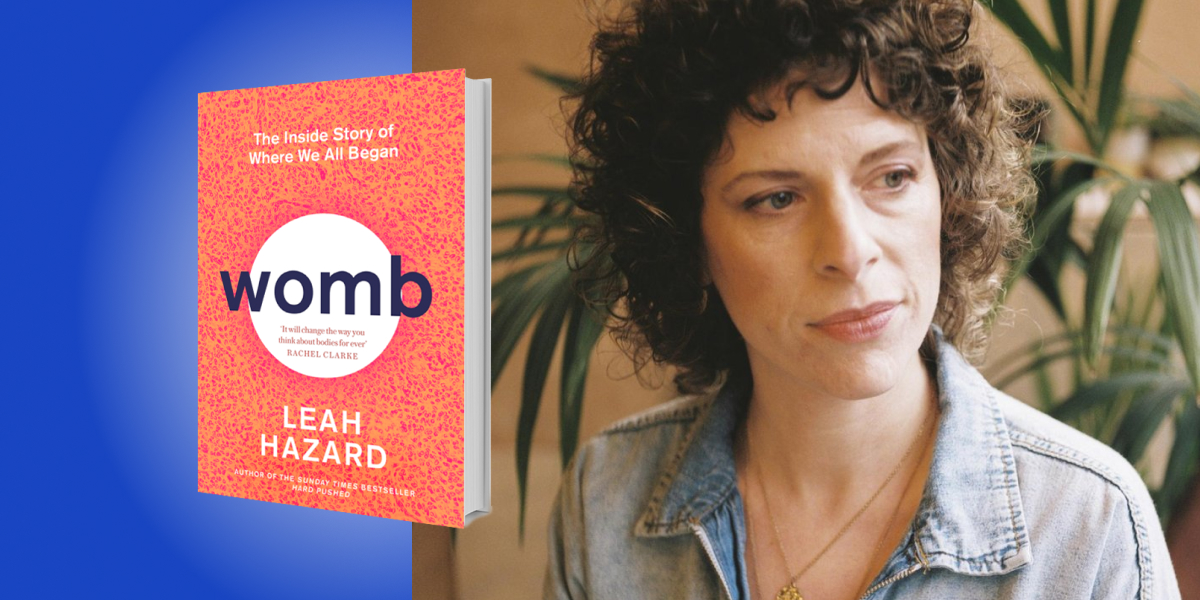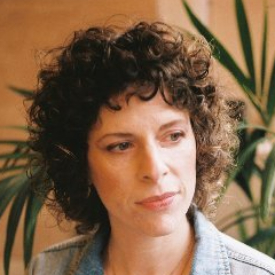Leah Hazard is a Harvard graduate and former journalist. She is now a practicing NHS midwife.
Below, Leah shares 5 key insights from her new book, Womb: The Inside Story of Where We All Began. Listen to the audio version—read by Leah herself—in the Next Big Idea App.

1. Empty wombs aren’t empty.
Until very recently, within the last 20 years or so, people thought that an empty uterus was empty. This concept, known as the sterile womb paradigm, originated in the early 20th century. It was inspired by some strange experiments with newborn baby poop, as well as some extremely old-fashioned ideas about female purity.
Today, new technologies in tissue sampling and analysis have revealed that far from being sterile and empty, the uterus almost certainly has its own microbiome: an environment full of billions of microorganisms, including bacteria, fungi, viruses, and yeasts.
What’s more, scientists believe that these microorganisms might play a key role in determining a person’s gynecological health. For example, an unbalanced microbiome could influence the development of uterine cancer and other diseases. The gut microbiome affects gastric conditions such as colitis and Clostridium difficile infections, and fecal microbiome transplants—transplanting blended feces from a healthy donor to a sick recipient—might be able to improve these conditions. So, why not something similar for wombs? If we can sample a person’s uterine microbiome—or even alter it, in the way we’re doing with the gut—we might open up a whole new world of personalized, effective gynecological treatments.
2. We’re getting gynecology all wrong.
Currently, billions of women and people with wombs suffer from painful periods: heavy bleeding and other devastating symptoms. It can take many years, with lots of painful, traumatic, and expensive investigations along the way, to diagnose gynecological conditions like endometriosis or fibroids. In addition to the immense personal toll, our inefficiency in diagnosing these conditions has a huge socioeconomic cost too—millions of dollars in sick days and reduced productivity. What if you could fix these problems by diagnosing diseases using just a pad, cup, or tampon, and your phone?
“There’s exponentially more research about semen, for example, than there is about menstrual blood.”
Scientists have discovered that each person’s menstrual blood contains a unique biochemical fingerprint. By collecting that flow in a pad, cup, or tampon, scientists can look for disease markers straight from the source. One biotech company is even looking at sending that analysis straight from your tampon to an app on your phone, in turn generating a health report that goes directly to your doctor. The technology exists, but we’re way behind on funding and rolling it out. Why? That’s a whole other story. There’s exponentially more research about semen, for example, than there is about menstrual blood. One can draw their own conclusions as to what kind of information is prioritized by funding bodies, and why.
3. If you’re going to steam your vulva, proceed with caution.
Vulvar or vaginal steaming, or v-steaming as it’s often called, is just one element of the huge womb wellness industry. This industry is a growing sector worth millions of dollars. Womb wellness is often touted by glossy, glamorous gurus as a way of using alternative therapies to balance hormones, improve fertility, and so much more. Some people argue that the womb wellness industry is dangerously exploitative, offering potentially harmful miracle cures at great expense to vulnerable people, and often culturally appropriating indigenous practices along the way.
However, the truth is more nuanced. Many women have become increasingly disillusioned with the mainstream industrial medical complex, whether because of high costs, long waiting times, or poor treatment due to racial and ethnic bias. In the future, reproductive health care must be accessible and effective. It also, in turn, has to address the unmet needs of women and other people who’ve turned to dubious womb wellness treatments in desperation.
4. Dudes can have wombs too.
Trans men, non-binary people, and cisgender men may have wombs. Some have a hysterectomy as part of a program of gender-affirming surgery. Some of them don’t. Take the case of the 37-year-old British man who went to his doctor with genital bleeding, or the 70-year-old Indian man who presented with testicular pain; each man was found to have a tiny, partially developed uterus that had lain dormant for decades.
“Some have a hysterectomy as part of a program of gender-affirming surgery.”
In the future, the gendered lines between those with wombs and those without will become even blurrier. It’s already possible for a woman born without a uterus to receive a donated womb, and to grow a fetus inside it. As reproductive technology becomes more advanced, cisgender men might even be able to receive donor wombs, going on to gestate babies in their own bodies, a prospect with almost unthinkably massive social implications.
5. The uterus is the nexus of choice.
The uterus is the most misunderstood yet highly legislated organ. Reproductive restrictions, and even reproductive violence, have been used as tools of oppression since the earliest days of recorded history. In My Body Is My Own, a 2021 report from the United Nations, only 55 percent of women surveyed in 57 countries said they were able to make their own decisions about sexual and reproductive health and rights. That’s a massive 45 percent of women who don’t have the basic human right of bodily autonomy.
When a person with a uterus doesn’t have full control over their sexuality, fertility, and reproductive life cycle, that person cannot contribute effectively to a just and equitable society. We urgently need to improve our understanding of the womb, collectively and as individuals. The womb is where we all began, but how we think about it, and what we do with it, can tell us so much more about where we’re going.
To listen to the audio version read by author Leah Hazard, download the Next Big Idea App today:






























